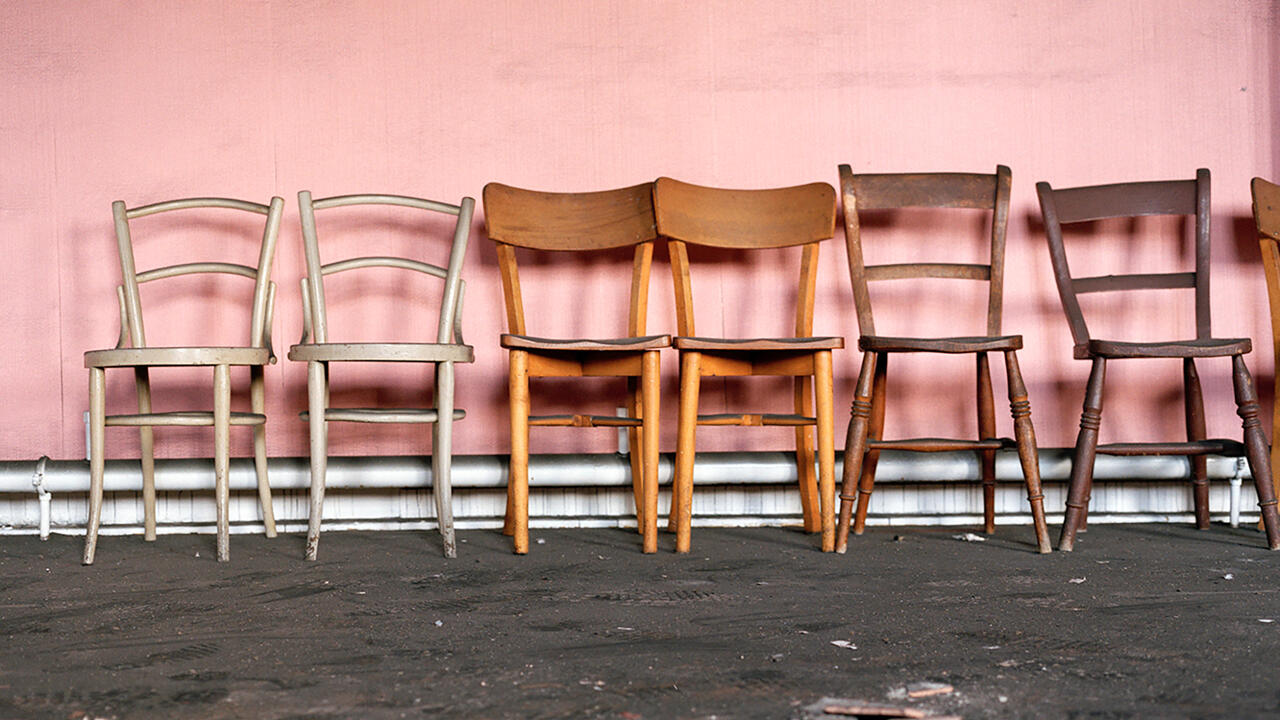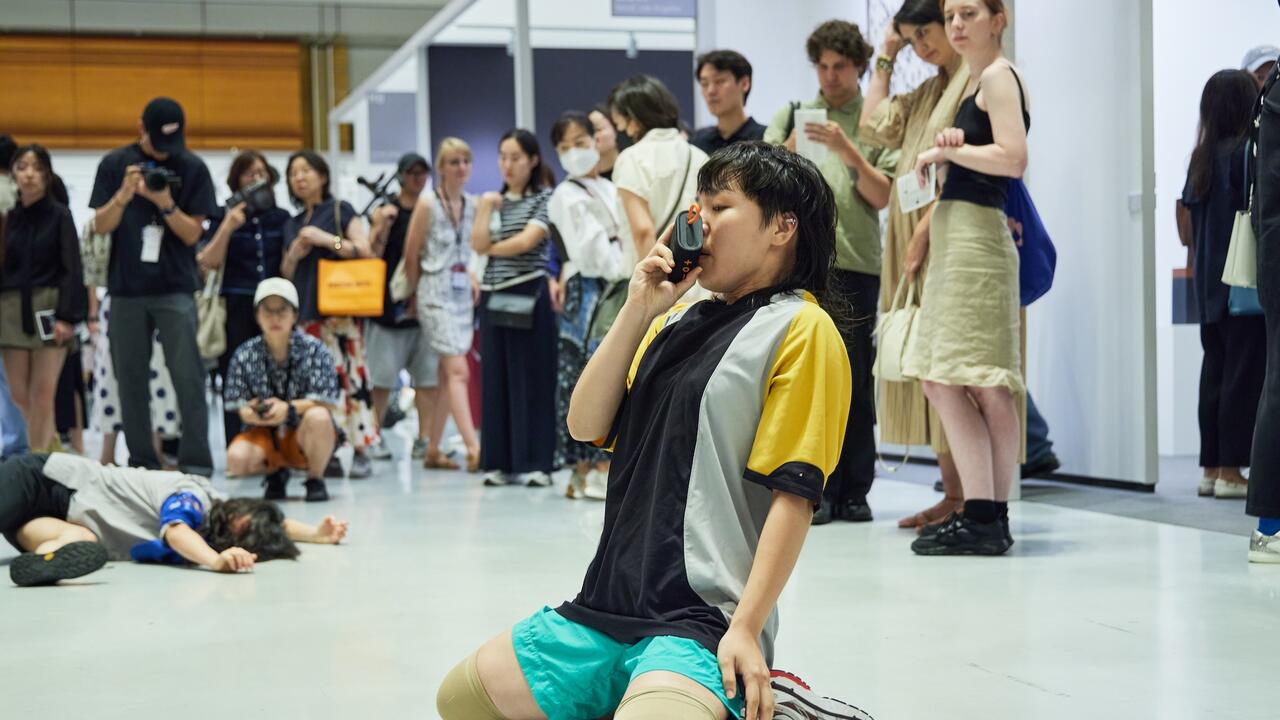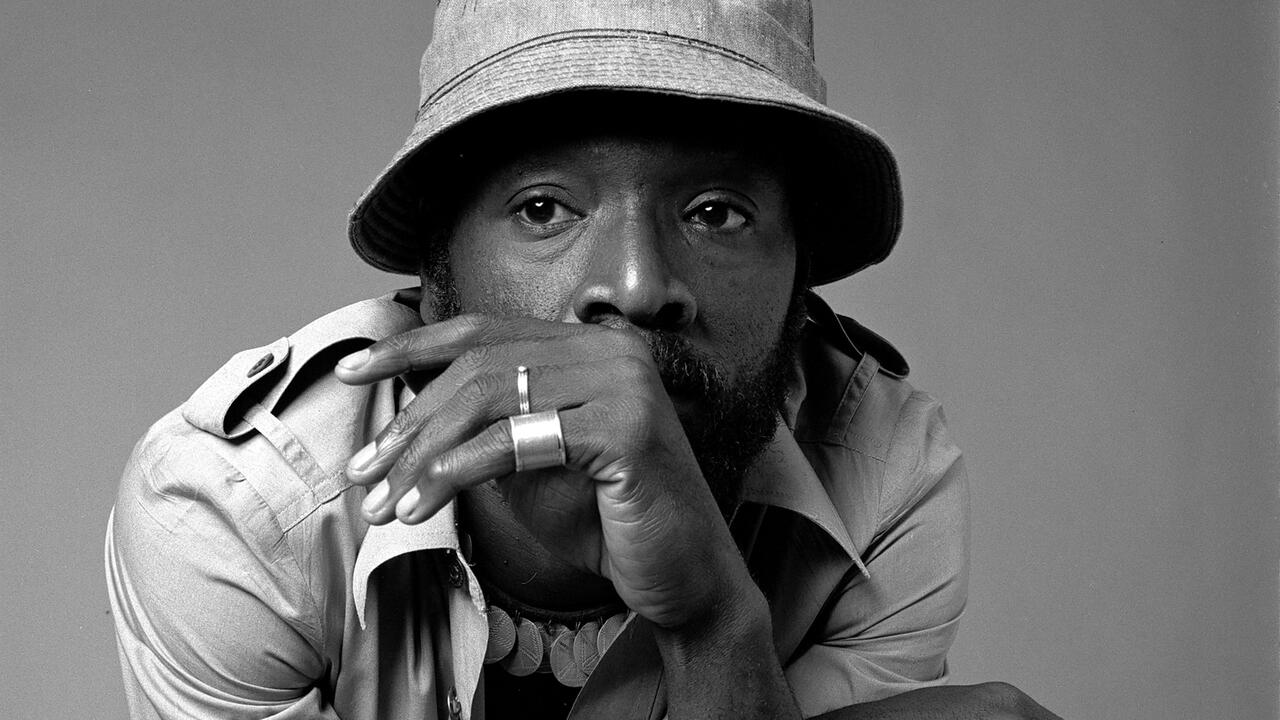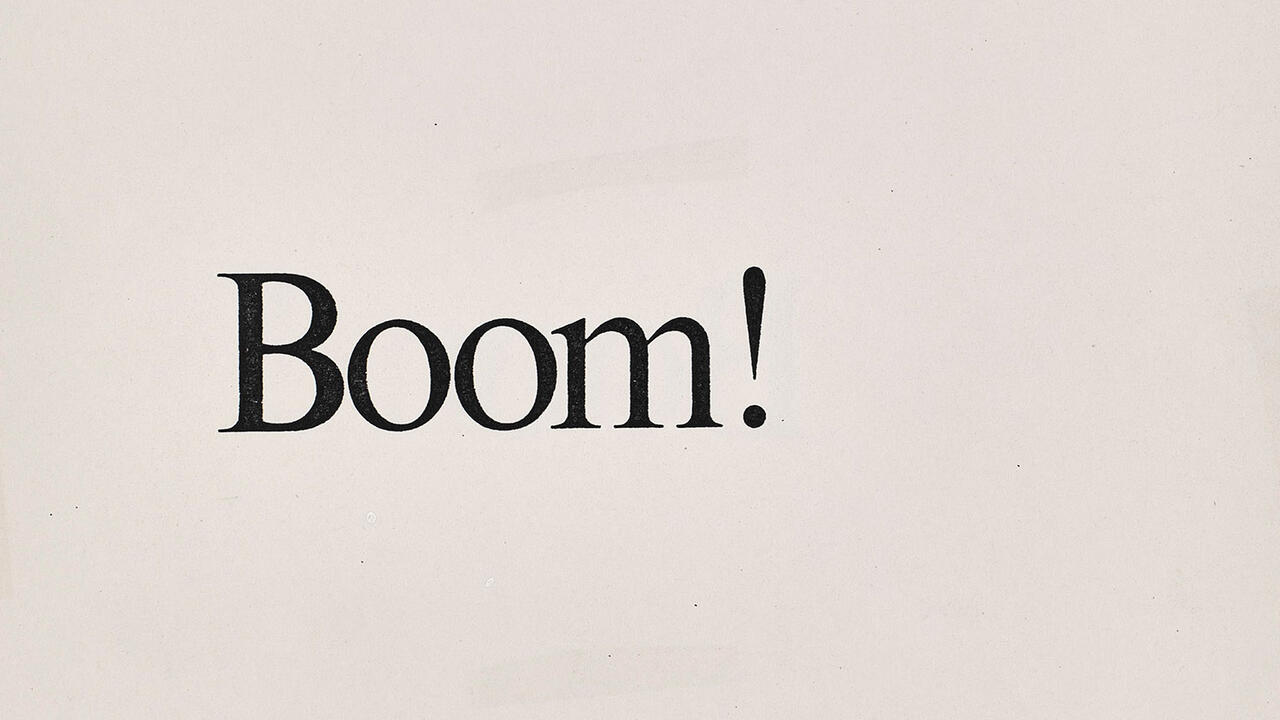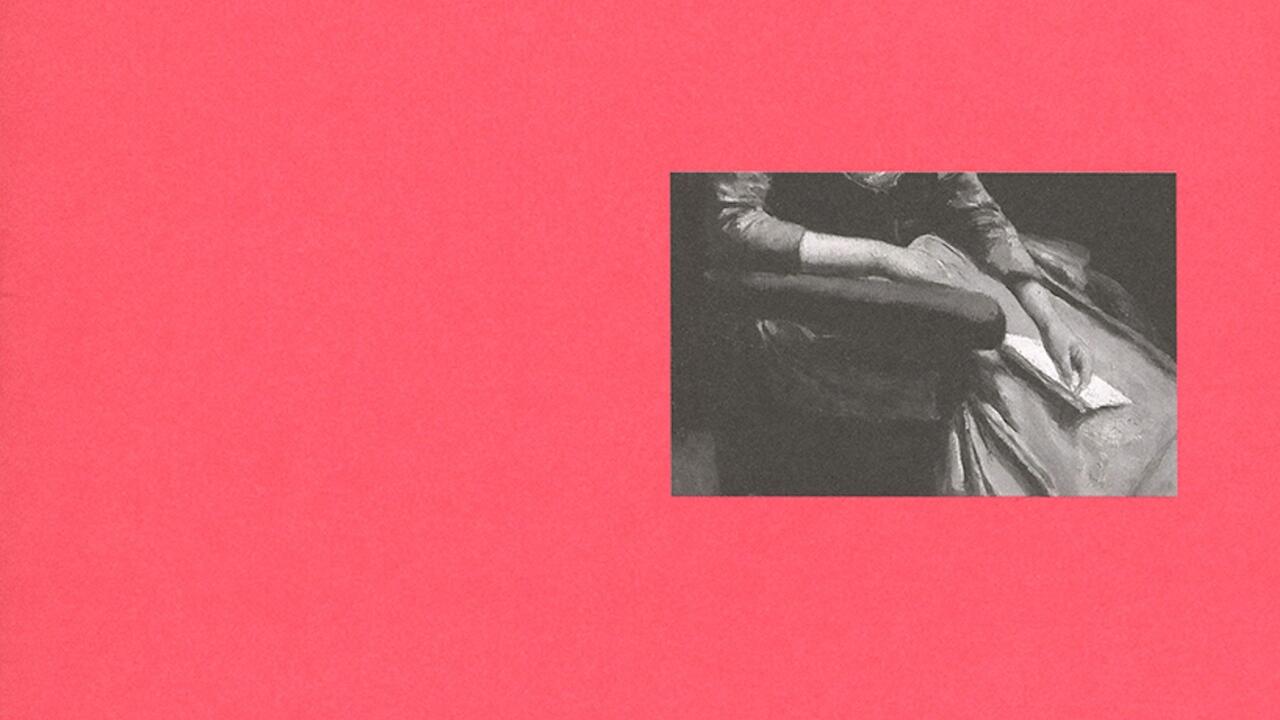P. Staff Blurs the Line Between Care and Violence
Through film, installation and sculpture, the artist’s unsettling work reveals the horror within the medical-industrial complex
Through film, installation and sculpture, the artist’s unsettling work reveals the horror within the medical-industrial complex

This piece appears in the columns section of frieze 248, ‘Disobedience’
I first came across P. Staff’s work in 2019, when I was a gallery assistant at a London art fair. Commonwealth and Council was showing the artist’s Weed Killer (2017) in the basement of the venue and, distracted from my task at hand, I would return to this salient film at every opportunity. Its script was based on Catherine Lord’s memoir, The Summer of her Baldness (2004), which tracks the author’s experience of chemotherapy. The film features a potent monologue by actor Debra Soshoux on the corporal devastation of the treatment, scenes shot on a thermal-imaging camera and artist Jamie Crewe doing a rousing lip-syncing performance in a gay bar. By casting two trans performers, Staff draws diffuse connections between the medical processes of transition and oncology and the power of pharmaceuticals to transform both the body and our sense of embodiment.

This February, as part of ‘Earthshaker’ – a group exhibition at Del Vaz Projects, Los Angeles, which brings together works by Staff with those of Derek Jarman and Ana Mendieta – the artist will exhibit reworked sculptures and holographic projections from ‘On Venus’, their 2019 show at London’s Serpentine Gallery, and their 2024 Kunsthalle Basel show, ‘In Ekstase’. When we met this past September, Staff was in the middle of production for several projects. They told me how their process of making has remained effectively unchanged since their time as a student at Goldsmiths in London in the late 2000s, where they ‘just photocopied all the time and that was my entire practice’. They go on: ‘I feel in some ways I’m taking things, copying them, refracting them, distorting them.’ Steel barrels from ‘On Venus’ have been cut open and flattened to become wall-based works that Staff has embellished with drips of acid and images from their archive. These include skinned animals, boys pissing in their own mouths, oral and ocular surgeries, all depicting, the artist tells me, how ‘pain might be accounted for or made visible and the entanglement between body and institution, artist and viewer, human and animal’.

They describe how their earliest work ‘was a lot about community’. For instance, The Foundation (2015) – a film depicting the Los Angeles archive and residence of Tom of Finland – captures the complex relationships, erotics, sub-communities and artistic production engendered by the space. ‘It’s ironic’, Staff continues, ‘that years later my work is about violence.’ They’re referring here to the brutality of sickness and debility, what Jasbir K. Puar describes in The Right to Maim: Debility, Capacity, Disability (2017) as ‘this sense of the undead and undying, of a slow death’. When Staff was a child, their parents worked in care homes, and it was from them that the artist learned about the ‘abuse that goes on within the context of care’. Staff tells me how their latest work addresses this knowledge ‘in tandem with my own transition and [tries] to make sense of a subject position that’s intimately tied to the medical-industrial complex, to warfare and to the history of medicine’. In this way, Staff’s practice differs from the ‘current alienating conversation around care’ that inaccurately positions it as ‘an antidote to violence’.

For ‘In Ekstase’, Staff worked with designer Basse Stittgen on the series ‘Bloodheads (Kunsthalle Basel)’ (2023), replicas of the eponymous art space’s architectural features that were cast using animal blood – a substance used in lab experiments by the same pharmaceutical companies that fund the institution. With this work, Staff elucidates the connections between animal suffering, human health and artistic value.
There’s nothing more horrific than things going on.
This latest shift in Staff’s practice has also seen them incorporate sensory and even sadistic elements into their works, with lights, strobes and colour deployed to provoke often unbearable physical responses. First used in ‘On Venus’, the artist’s first major exhibition in their native UK, Staff’s now-characteristic jaundiced-yellow lighting puts viewers on edge, as if they were being smothered by toxic air, reminding them of the industrial waste of mass production, warfare and the technologies of medical imaging. In this context, the light became a means of addressing the quotidian violence of British austerity and how it chokes access to public life. Staff tells me that, when they reused the light in ‘In Ekstase’, ‘it came out of wanting to take some of the fundamental qualities of a gallery – one of those being lights – and turning it up too bright. It could be healing, or it could be slowly killing you. These feel [like] democratizing strategies; everyone is bathed in the same piss, toxic yellow and so it’s another way of forcing people into this violent communality.’

Staff is currently developing ways to address medicine, pain and violence while incorporating a new poetic sensibility. In recent holographic works, such as In Ekstase (2023) and IMPACT PLAY (2023), Staff included their own poetry for the first time, as a way of forcing themselves ‘out of a citational practice and attempting to hold political states within formal and linguistic experiments’. IMPACT PLAY features text flashing across a video reproduction of a holographic fan that reads: ‘Touching, a hand, touch a face, back handed slap – hand slap head back.’ These needy, intimate messages are interlaced with footage of X-rays and ultrasounds, framing pleasure and the abject as associated sensory forces.
For their 2023 film La Nuit Américaine (The American Night), Staff adopts an old Hollywood technique that uses filters and lenses to produce an image resembling nighttime, despite having been taken during the day; the result is eerily crepuscular. Staff has described their recent work as exemplifying what they call ‘apocalyptic surrealism’, or the sensation of an impending yet unseen crisis. In the saturnine La Nuit Américaine, scenes of people walking around, families on the beach, skateboarders and the sounds of birds singing become quietly terrifying. ‘I wanted to produce a horror film by shooting the most banal, almost-documentary footage. A part of that was wanting to articulate this sense that there’s “nothing more horrific than just things going on in continuation”’ – that our lives are sustained by a prosaic orgy of violence. It is in this unnerving place of ambivalence that Staff’s work meets us.
This article first appeared in frieze issue 248 with the headline ‘Bathed in Light’
P. Staff will be included in ‘Earthshaker’ on view at Del Vaz Projects, Los Angeles, from February
Main image: P. Staff, In Ekstase (detail), 2023, installation view, ‘In Ekstase’, Kunsthalle Basel. Courtesy: Kunsthalle Basel; photograph: Philipp Hänger





